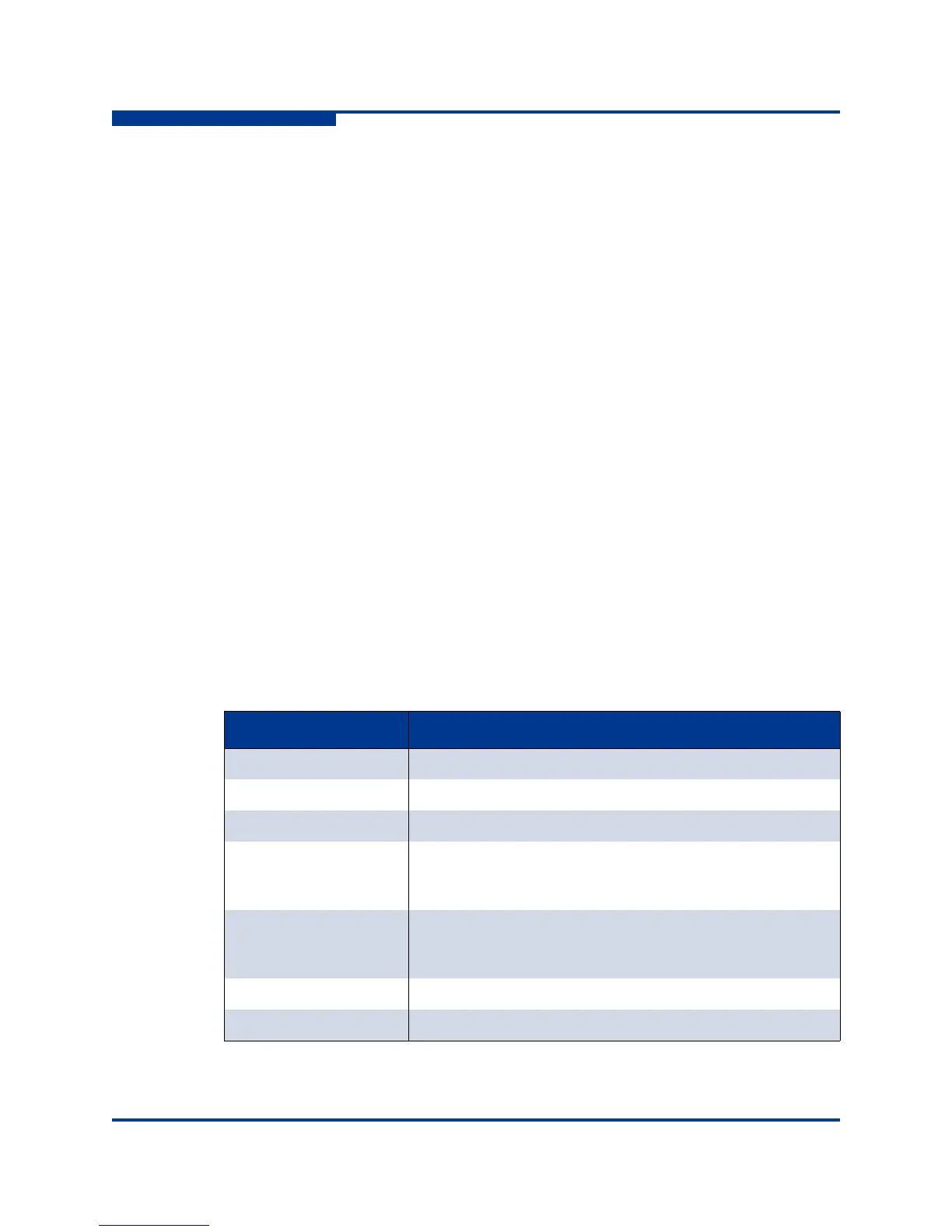3 – Planning
Device Access
3-2 59265-00 A
S
Device Access
Consider device access needs within the fabric. Access is controlled by the use of
zoning. Some zoning strategies include the following:
Separate devices by operating system.
Separate devices that have no need to communicate with other devices in
the fabric or have classified data.
Separate devices into department, administrative, or other functional group.
Reserve a path and its bandwidth from one port to another.
Zoning divides the fabric for purposes of controlling discovery and inbound traffic.
A zone is a named group of ports or devices. Members of the same zone can
communicate with each other and transmit outside the zone, but cannot receive
inbound traffic from outside the zone. Zoning is hardware-enforced only when a
port/device is a member of no more than eight zones whose combined
membership does not exceed 64. If this condition is not satisfied, that port
behaves as a soft zone member. You can assign ports/devices to a zone
individually or as a group by creating an alias.
A zone can be a component of more than one zone set. Several zone sets can be
defined for a fabric, but only one zone set can be active at one time. The active
zone set determines the current fabric zoning.
A zoning database is maintained on each switch. Table 3-1 describes the zoning
database limits, excluding the active zone set.
Table 3-1. Zoning Database Limits
Limit Description
MaxZoneSets Maximum number of zone sets (256).
MaxZones Maximum number of zones (2000).
MaxAliases Maximum number of aliases (2500).
MaxTotalMembers Maximum number of zone and alias members (10000) that
can be stored in the zoning database. Each instance of a
zone member or alias member counts toward this maximum.
MaxZonesInZoneSets Maximum number of zones that are components of zone
sets (2000), excluding the orphan zone set. Each instance of
a zone in a zone set counts toward this maximum.
MaxMembersPerZone Maximum number of members in a zone (2000).
MaxMembersPerAlias Maximum number of members in an alias (2000)
